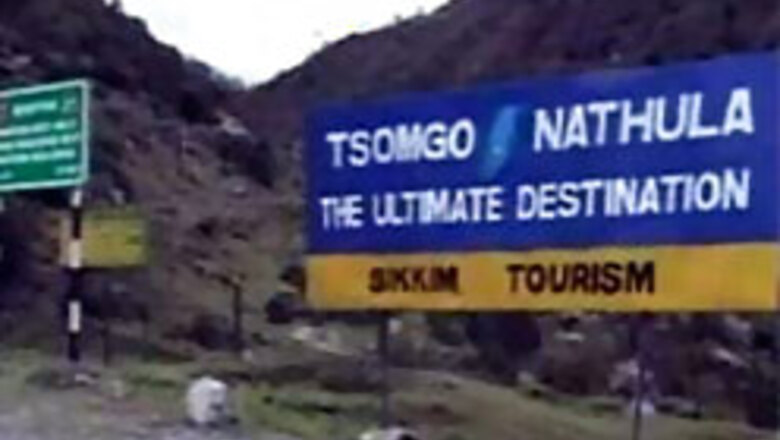
views
Nathu La (Sikkim): Bilateral trade between India and China opened on Monday through the fabled Silk Road amid a fresh border row, with Beijing claiming a strip of land in Sikkim.
"Border trade was earlier scheduled to open on May 1 but was postponed after Beijing requested New Delhi to delay the start following landslides in the Tibet Autonomous Region," said Ujwal Gurung, Sikkim's director of industry and commerce.
"Formal trade for the current year began on Monday and would continue until Nov 30," Gurung told IANS.
The reopening of bilateral trade comes at a time when Beijing has once again raked up a border row by claiming a narrow strip of land near village Gyangyong in northern Sikkim.
Chinese officials have apparently objected to stone cairns erected at the village by Indian soldiers.
India has told China it would not allow Chinese troops into the area and that it would mean a breach of the treaty between the neighbours to maintain peace along the border.
The two Asian giants in July 2006 reopened trade across the 15,000-ft Nathu La Pass, 52 km east of Sikkim's capital Gangtok, as part of a broader rapprochement. The move marked the first direct trade link between the nuclear-armed neighbours since a bitter border war in 1962.
Under an agreement reached between the two countries, trade takes place four days a week - Monday to Thursday - beginning May 1 each year and lasting until November 30 when snow makes the area impassable.
Although two-way trade was slow in the first two seasons, about 1,200 Chinese traders crossed the border separated by a rusty barbed wire marker to the bazaar of Sherathang, five kilometres below the pass on the Indian side.
About 700 Indian traders headed to the Renqinggang interim market in Tibet on the Chinese side, 16 km from the border.
Bilateral trade in 2006 through Nathu La saw business worth about Rs.2 million (approx $47,000) with Indian traders doing business worth about Rs.1.1 million. Last year, the volume of trade was to the tune of Rs.2.6 million.
The sluggish border trade between the two countries is due to restrictions in tradable items - India can import 15 items from China including silk, yak pelts and horses, and export 29 goods that include textiles, tea, rice, vegetables and herbs.
"There is a need for broadening the list of both importable and exportable items for boosting trade. The Chinese traders have been selling just yak pelts and sheep wool. It is imperative that the two countries decide to review the present export-import list," said S K Sarda, president of the Sikkim Chamber of Commerce.
"The Sikkim government has already proposed to the government of India a review of the list of items and have suggested at least 100 items for export," director Gurung said.
A team of Indian parliamentarians is visiting Sikkim Sunday to discuss measures to boost two-way border trade through Nathu La.
Beijing had in 2003 given up its territorial claim over the Indian state of Sikkim but was still holding on to its stand that a vast stretch of Arunachal Pradesh belongs to them.
China has never recognised the 1914 boundary with India, known as the McMahon Line, and claims 90,000 square kilometres - nearly all of Arunachal Pradesh in India's northeast. India also accuses China of occupying 38,000 square kilometres in Jammu and Kashmir.
"Border trade would not be affected despite some controversies," a senior Sikkim government official said requesting anonymity.


















Comments
0 comment